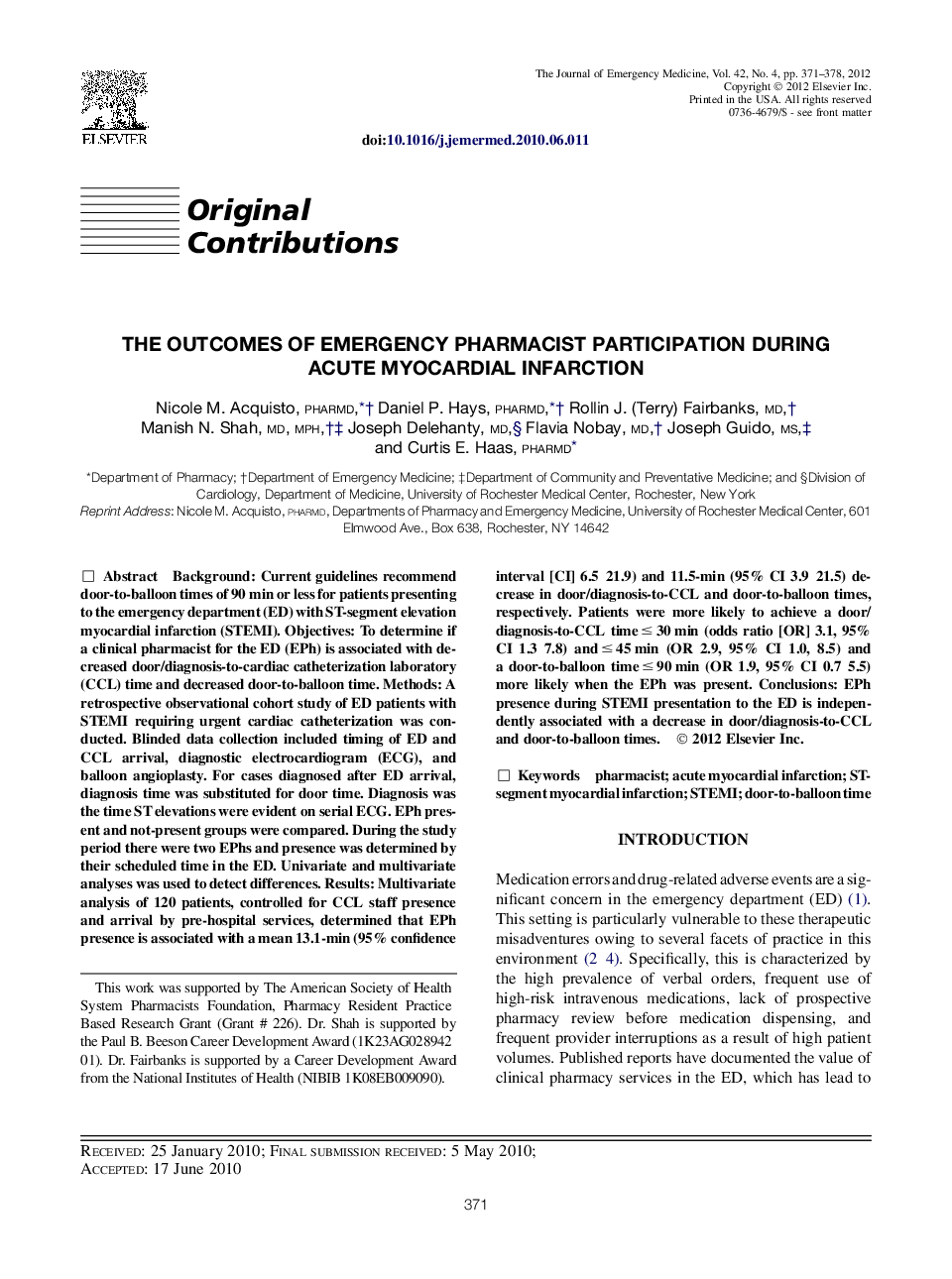| Article ID | Journal | Published Year | Pages | File Type |
|---|---|---|---|---|
| 3247138 | The Journal of Emergency Medicine | 2012 | 8 Pages |
BackgroundCurrent guidelines recommend door-to-balloon times of 90 min or less for patients presenting to the emergency department (ED) with ST-segment elevation myocardial infarction (STEMI).ObjectivesTo determine if a clinical pharmacist for the ED (EPh) is associated with decreased door/diagnosis-to-cardiac catheterization laboratory (CCL) time and decreased door-to-balloon time.MethodsA retrospective observational cohort study of ED patients with STEMI requiring urgent cardiac catheterization was conducted. Blinded data collection included timing of ED and CCL arrival, diagnostic electrocardiogram (ECG), and balloon angioplasty. For cases diagnosed after ED arrival, diagnosis time was substituted for door time. Diagnosis was the time ST elevations were evident on serial ECG. EPh present and not-present groups were compared. During the study period there were two EPhs and presence was determined by their scheduled time in the ED. Univariate and multivariate analyses was used to detect differences.ResultsMultivariate analysis of 120 patients, controlled for CCL staff presence and arrival by pre-hospital services, determined that EPh presence is associated with a mean 13.1-min (95% confidence interval [CI] 6.5–21.9) and 11.5-min (95% CI 3.9–21.5) decrease in door/diagnosis-to-CCL and door-to-balloon times, respectively. Patients were more likely to achieve a door/diagnosis-to-CCL time ≤ 30 min (odds ratio [OR] 3.1, 95% CI 1.3–7.8) and ≤ 45 min (OR 2.9, 95% CI–1.0, 8.5) and a door-to-balloon time ≤ 90 min (OR 1.9, 95% CI 0.7–5.5) more likely when the EPh was present.ConclusionsEPh presence during STEMI presentation to the ED is independently associated with a decrease in door/diagnosis-to-CCL and door-to-balloon times.
